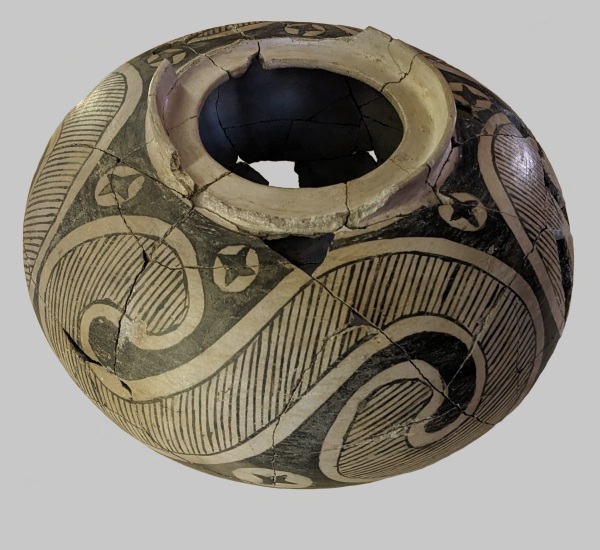Aztec Ruins National Monument, NM
Encyclopedia of Aztec Ruins National Monument
 |
is for Ceramics. |
Ceramics have been produced in the Southwest for nearly 2,000 years, beginning with plain brown and gray ware, followed by corrugated ware. Around 600 CE, potters began to paint whiteware and redware with mineral or plant pigments before firing to create black-on-white designs. This style spread rapidly across the region, and over the next seven centuries, designs became more intricate and refined.
Aztec is a relatively late site, with no pottery found here dating earlier than ca. 1000 CE. However, an extensive collection featuring 40 different types of pottery indicates people imported thousands of pots.
Potters living at Aztec made corrugated grayware and black-on-white ware using some of the same vessel forms and design motifs found on imported ceramics. Rare forms include animal and human effigies, flat rectangular bowls, cylindrical jars and spiked pots. Aztec black is a style found only at Aztec Ruins. Produced in the 1200s CE, vessels are completely smudged black with a highly polished surface. Archaeologists use color, shape, design and type of finish to determine when, where and who made different ceramics.
When you visit Aztec Ruins NM and other National Parks, remember that everything is protected for this and future generations, so please leave artifacts, rocks and everything else where you find it.

